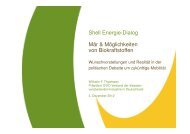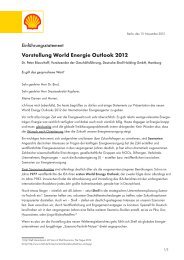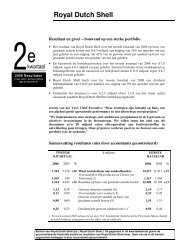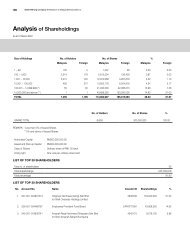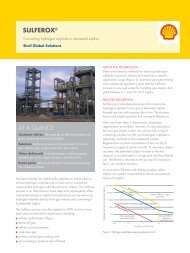62414 sustain 40pp (Mag)
62414 sustain 40pp (Mag)
62414 sustain 40pp (Mag)
You also want an ePaper? Increase the reach of your titles
YUMPU automatically turns print PDFs into web optimized ePapers that Google loves.
WORKING IN CHALLENGING LOCATIONS<br />
Sakhalin<br />
Sakhalin II emerged from a tumultuous<br />
2006 with a new shareholder – Gazprom<br />
-- in sight and an agreement in principle<br />
with the Russian Government on an<br />
amended development budget for Phase 2.<br />
These are important steps forward,<br />
helping position the project to finish<br />
construction, deliver its first LNG to<br />
customers in 2008, and meet its<br />
environmental commitments and create<br />
lasting community benefits.<br />
Sakhalin II is typical of the projects needed to<br />
meet the energy challenge – large, complex<br />
and often in environmentally sensitive frontier<br />
locations. It will add 6% to the world’s<br />
current LNG capacity, helping meet rapidly<br />
growing natural gas demand in Japan, Korea<br />
and North America. Completing it successfully<br />
will also help Russia demonstrate its continuing<br />
ability to host world-class energy projects with<br />
foreign partners. At an oil price of $34 a<br />
barrel, federal and local governments will earn<br />
an estimated $50 billion from Sakhalin II over<br />
its lifetime.<br />
With the entry of Gazprom, which Shell<br />
welcomes, Sakhalin II is expected to continue<br />
to provide significant long-term value for our<br />
shareholders. Under the terms of the protocol,<br />
Sakhalin II will add nearly 100,000 barrels of<br />
oil equivalent a day (two-thirds of this natural<br />
gas) to Shell’s production at its peak and create<br />
WHAT IS IT?<br />
• The largest and most complex oil and<br />
LNG project currently under construction.<br />
• Phase 1 of Sakhalin II began producing<br />
oil from Russia’s first offshore platform<br />
in 1999.<br />
• The $20 billion Phase 2 includes two more<br />
offshore platforms, more than 1,800 km of<br />
pipelines and Russia’s first LNG plant.<br />
• Construction was approximately 80%<br />
complete at end 2006. LNG production is<br />
due to start in 2008.<br />
• A joint venture operated by Sakhalin<br />
Energy Investment Company Ltd (SEIC).<br />
• Protocol was signed in December 2006 to<br />
sell 50% plus one share of Sakhalin II to<br />
Gazprom for $7.45 billion. This will<br />
reduce Shell’s share of SEIC from 55% to<br />
27.5%, Mitsui’s from 25% to 12.5% and<br />
Mitsubishi’s from 20% to 10%.<br />
34 THE SHELL SUSTAINABILITY REPORT 2006<br />
the possibility of expanding activities with<br />
Gazprom in Sakhalin.<br />
With construction approximately 80% complete,<br />
the first priority now is to get the project up and<br />
running – on time, safely, and responsibly. All<br />
shareholders are fully committed to delivering a<br />
world-class project in all respects, including<br />
environmental and social performance.<br />
River crossings<br />
A novel and transparent approach has been<br />
adopted to protect wild salmon during the<br />
construction of the project’s onshore pipelines.<br />
The pipelines cross about 180 sensitive salmon<br />
spawning rivers. Sakhalin Energy requires<br />
contractors to use low-impact techniques for<br />
these crossings, including working in winter<br />
when the rivers are frozen or at low flow. When<br />
some contractors failed to do so during the<br />
winter of 2004/05, Sakhalin Energy stopped<br />
work, improved its controls and sought help<br />
from outside experts. Independent observers and<br />
environment agency representatives were invited<br />
to monitor, first-hand, how each sensitive<br />
crossing was made during the winters of<br />
2005/06 and 2006/07. This was a first for the<br />
industry. The observers’ findings are published<br />
on Sakhalin Energy’s website.<br />
Most of the sensitive crossings were done in the<br />
winter of 2005/06. In addition to the<br />
precautions taken during construction,<br />
temporary erosion controls were put in place<br />
and grass replanted on steep river banks along<br />
the pipeline route to prevent sediment run-off<br />
into rivers during the spring thaw. A few rivers<br />
had more sedimentation than planned.<br />
However, the likely impact on the salmon<br />
spawning grounds is limited and temporary,<br />
with the rivers expected to return to normal in<br />
two to three years. By the end of April 2007,<br />
all sensitive crossings had been completed.<br />
Western gray whales<br />
Most of what scientists know about the critically<br />
endangered western gray whales, which spend the<br />
summer months off Sakhalin Island, comes from<br />
the $1 million a year research and monitoring<br />
programme that Sakhalin Energy and Exxon<br />
Neftegas Ltd have sponsored for many years.<br />
Sakhalin Energy has taken advice from<br />
independent experts on protecting the whales<br />
during offshore construction. The project<br />
re-routed the offshore pipeline 20 km further<br />
away from the whales’ feeding ground, and<br />
used advanced acoustics and strict speed limits<br />
on vessels to minimise disturbance. Impacts on<br />
the whales have been carefully monitored and<br />
their population has grown.<br />
In 2006, a long-term western gray whale<br />
advisory panel was established. Convened by<br />
the World Conservation Union (IUCN), its<br />
scientific experts will study the whales’ habits<br />
and monitor the project’s impacts during final<br />
construction and operation.


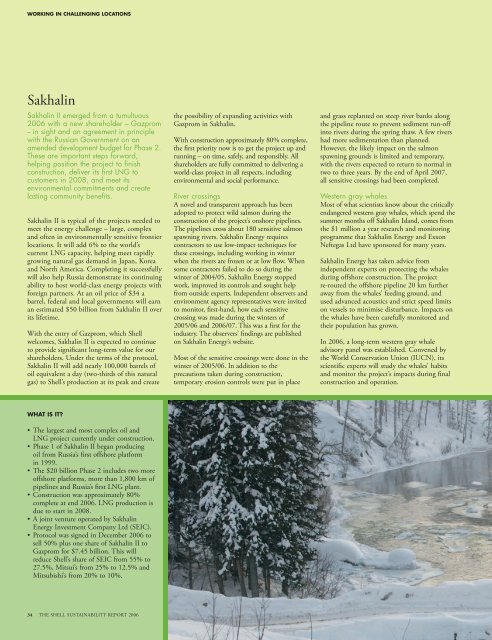

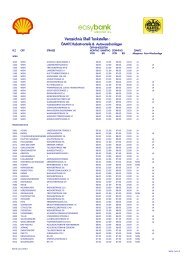
![Download Shell AutoGas Stationen [Stand: Januar 2013] (PDF](https://img.yumpu.com/9982753/1/190x245/download-shell-autogas-stationen-stand-januar-2013-pdf.jpg?quality=85)
